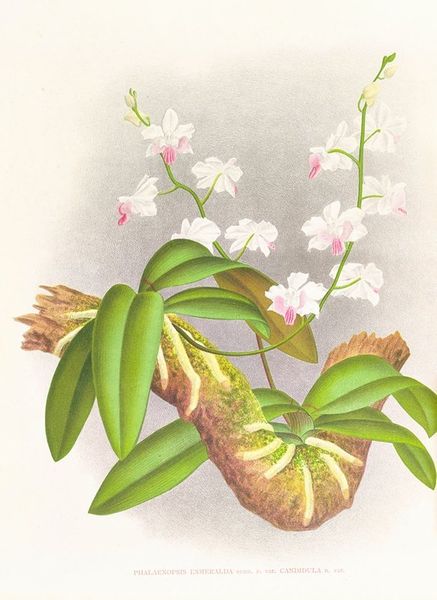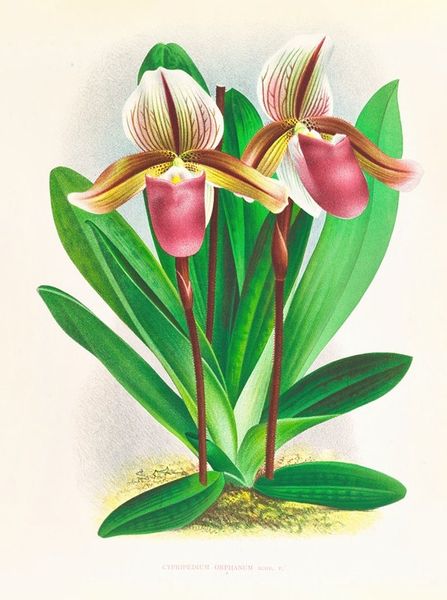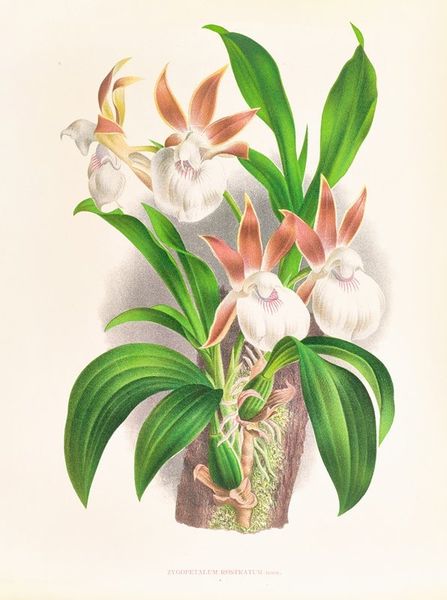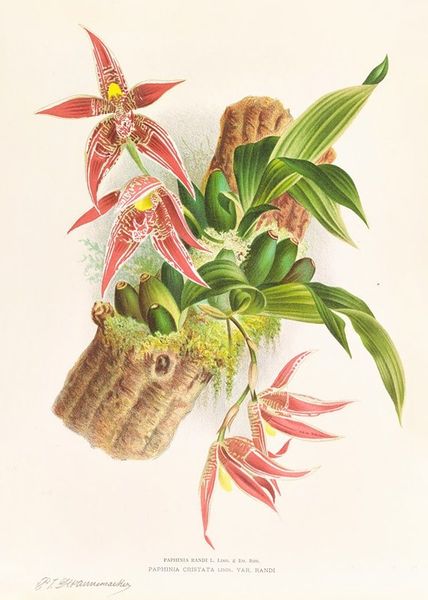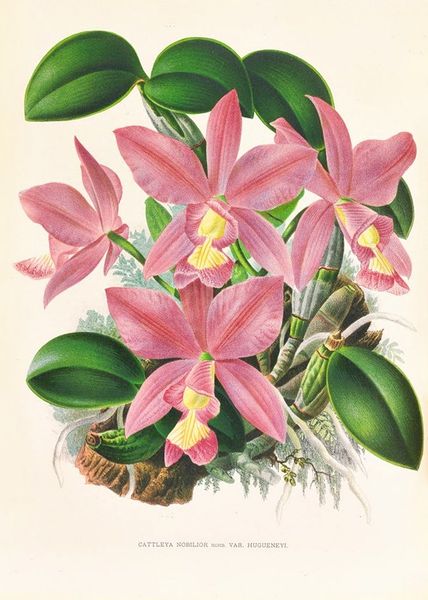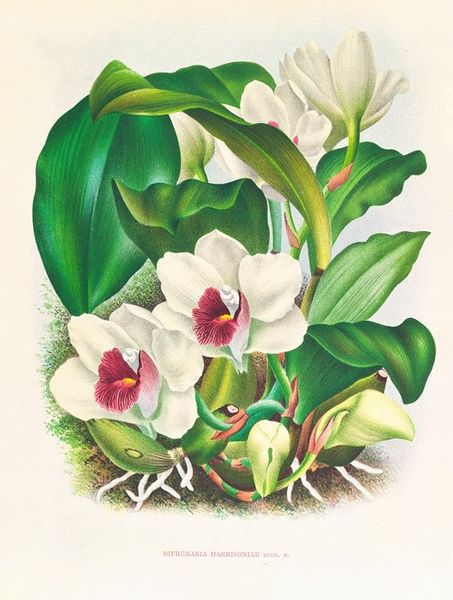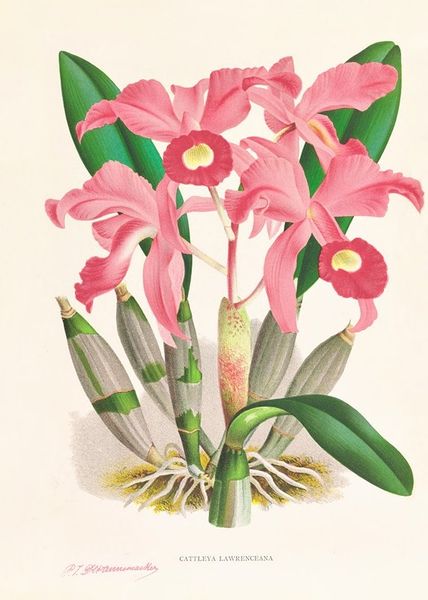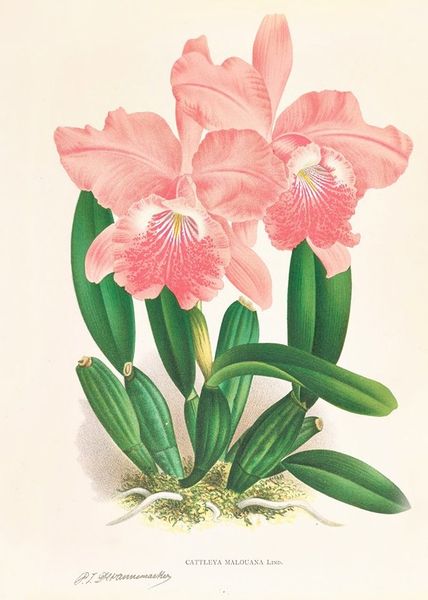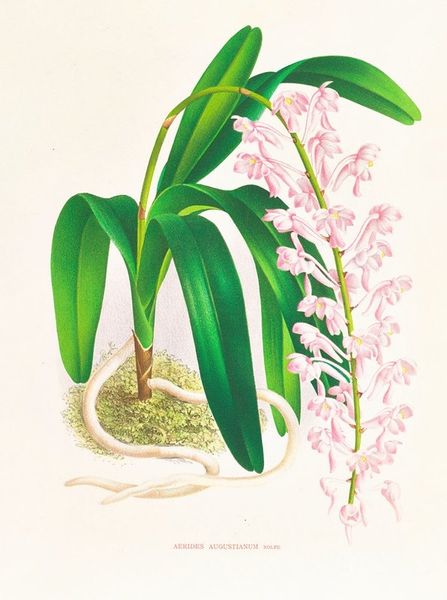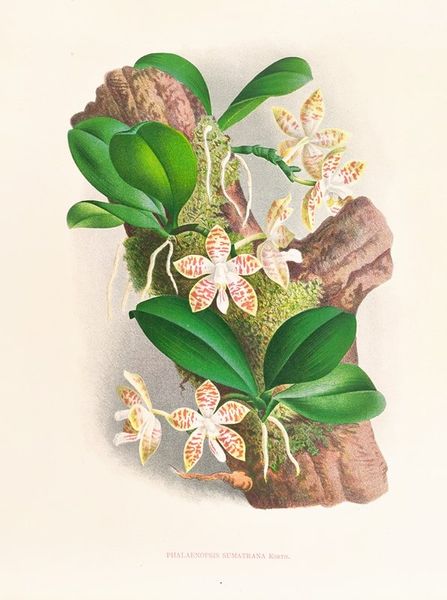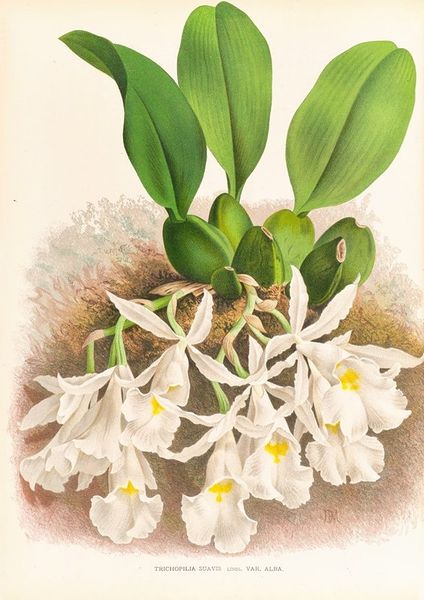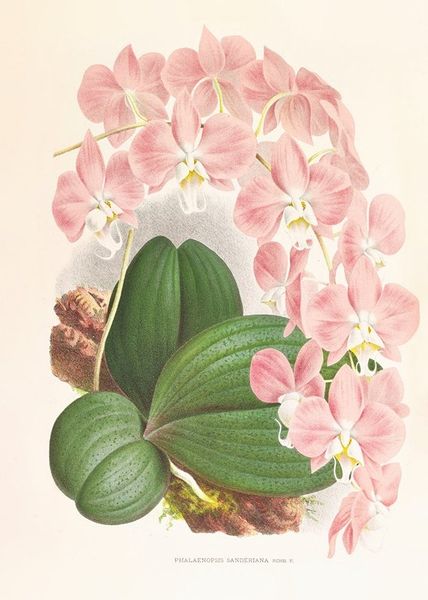
Copyright: Public Domain: Artvee
Editor: Here we have Jean Jules Linden’s “Cattleya schilleriana,” created sometime between 1885 and 1906, rendered in watercolor. It’s striking how vividly present these orchids appear, almost leaping off the page. How do you interpret the lasting significance of botanical art like this? Curator: Botanical art, such as Linden’s “Cattleya schilleriana”, operates as more than just a pretty picture; it's a repository of cultural memory. Consider the orchid itself—a symbol of luxury, exoticism, even eroticism. Linden’s exacting detail allows us to trace not just the plant's features but also its journey through scientific understanding and colonial encounters. What do you notice about the colour palette and composition? Editor: I see contrasting textures, from the smooth leaves to the textured flowers and moss. The palette is vibrant, but somewhat restrained. The composition leads my eyes from the top-right down towards the flowers. Curator: Exactly! That careful observation is key. The vibrant yet controlled color hints at the Victorian obsession with cataloging the natural world, but the slight impressionistic looseness suggests a growing fascination with the subjective experience of seeing. In a way, the orchid, rendered with such delicate precision, becomes a mirror reflecting society’s complex relationship with nature. It invites questions about exploitation and appreciation that still resonate today. Editor: So, the painting becomes a symbol that reminds us of culture's impact on how we view the natural world. I never thought about it like that! Curator: Precisely. Seeing art as a form of symbolic record expands our understanding not just of art history, but of cultural history.
Comments
No comments
Be the first to comment and join the conversation on the ultimate creative platform.
